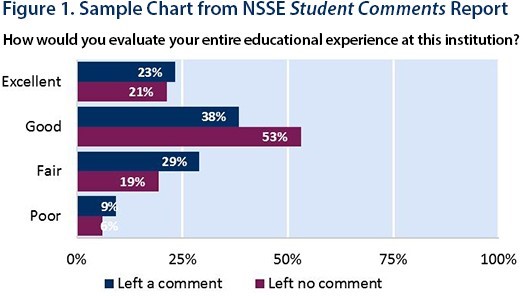How Do Institutions Use Their Student Comments?
San Francisco State University (SFSU) analyzed responses to the prompt “What one change would most improve the educational experience at this institution, and what one thing should not be changed?” Comments revealed three salient themes: class availability, graduation, and diversity. SFSU is using specific results to support positive aspects and minimize negative issues found in comments associated with these themes to help increase student engagement. SFSU’s student comments are displayed in attractive, colorful infographics available at the Institutional Research website.

The Beloit College Office of Institutional Research, Assessment, and Planning (IRAP) reviews their NSSE Student Comments data for specific mentions of offices, services, and people. Compliments about the quality of services, the helpfulness of staff, or the encouragement of faculty are passed along to appropriate individuals. By sharing positive and sometimes constructive feedback from the Student Comments report, IRAP generates goodwill about NSSE and Beloit’s participation while also promoting the value of student voices in assessment.
At Southern New Hampshire University's (SNHU) University College campus, NSSE results and questions that arise from them serve as the content of a one-credit School of Education course, “Inquiry Scholars.” Each semester, students enrolled in this course are asked to take up an authentic problem related to improving student learning that can be illuminated with their campus data. After SNHU’s administration of NSSE 2017, eight Inquiry Scholars classmates completed an analysis of the open-ended NSSE item, “What one change would you most like to see implemented that would improve the educational experience at this institution, and what one thing should not be changed?” The Inquiry Scholars put each comment from the 270 respondents who answered this question on a strip of paper and sorted these into thematic affinity groups. After analyzing the results by gender and year, they shared their findings with more than 150 faculty and staff members. Faculty, in turn, were asked to answer the same prompt during this event, and the Inquiry Scholars analyzed those results as well.




